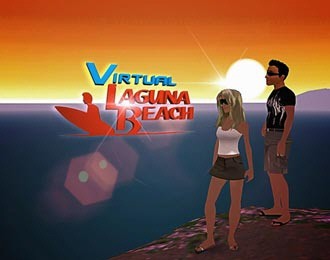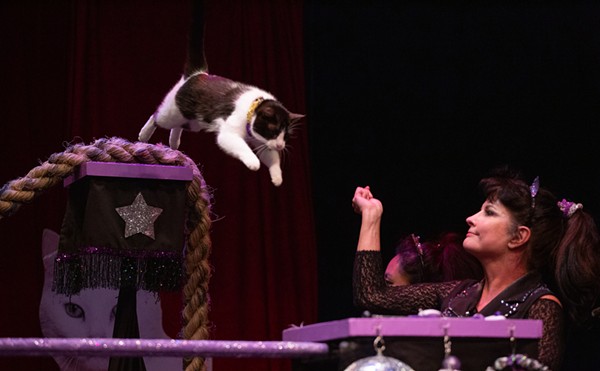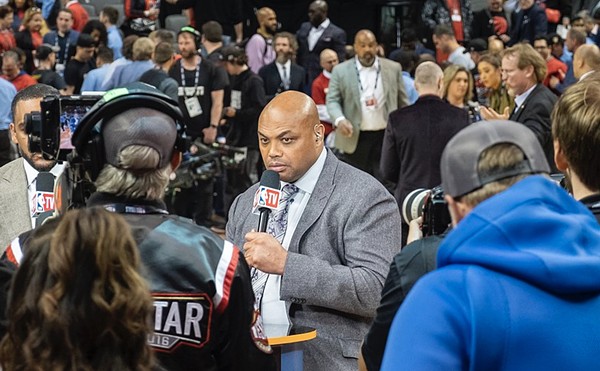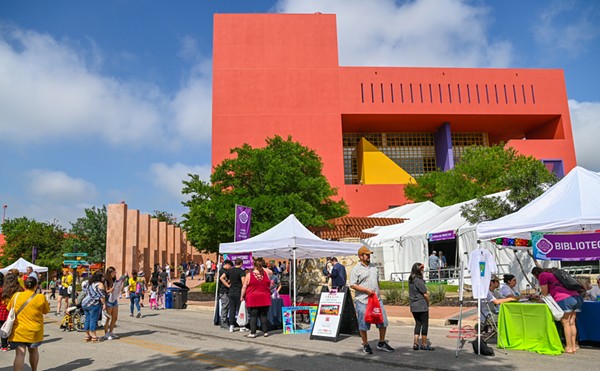| Virtual Laguna Beach, an immersive MTV world that lets players live the hit TV show. Courtesy image. |
A collective groan of disappointment emerged from the tired and hungry crowd. Seasoned conference junkies braced for the inevitable riot. Would the marketing wonks and computer geeks march on the kitchen in search of food? Who would be the first to raise their voices?
But — remarkable for a conference of this size — nothing happened. The unlucky shrugged, resumed their conversations, and hunted for peanuts in their laptop bags. Some were openly smiling. After all, for anyone who is excited about business becoming involved with virtual worlds, running out of food was a good sign. The shortfall of boxed lunches was further proof that Madison Avenue and Wall Street are eager to tackle this new medium.
Some may have gone hungry on the first day, but the event left a pleasant taste in the mouths of most participants. As Daniel Terdiman noted in a write-up for CNET, the “secret sauce” of the conference was the productive mixture of virtual-world practitioners and hundreds of industry professionals.
Everyone agreed that these new platforms are still in their infancy, and there was a palpable sense of shared enthusiasm about the creative potential. The conference program was packed with case studies from companies and government agencies that have recently experimented with initiatives in the virtual world.
Matt Bostwick, a senior vice president at MTV, reported on the music channel’s successful experiments with Virtual Laguna Beach and Virtual Hills. During the past six months, more than 600,000 users have created characters in immersive online spaces that emulate the locales of the programs Laguna Beach and The Hills. Bostwick announced that the network will soon do the same thing with Pimp My Ride, linking all three programs to one another via a virtual highway system.
Entertainment-related initiatives pursued by other agencies include Nicktropolis (a virtual environment aimed at children between the ages of six and fourteen), movie premieres hosted by the Sundance Channel, a recreation of ancient Greece for the blockbuster 300, an island serving fans of the television program The L Word, and an immersive thrill-seeking zone created by The Weather Channel.
The panels were not limited to entertainment. Dr. John Anderton, acting associate director of communications at the Centers for Disease Control, described the ways that his agency has used Second Life as a vehicle for health education and as a channel for disseminating real-time health alerts. Randal Moss of the American Cancer Society reported that the organization raised more than $46,000 during a SL-based “relay for life” event last year.
Most panelists mentioned the jaw-dropping growth of Second Life. The social virtual world now claims more than five million residents, which represents a 500-percent increase since last November. Though the residency figures are somewhat misleading, the number of unique users and the number of concurrent users are also growing at an exponential rate.
While Second Life was praised as the most powerful and open-ended social virtual world, many panelists worried about the platform’s ability to sustain this growth without sacrificing performance. Others expressed concern that minors are not able to participate in the main Second Life grid because adult content is so widespread.
By the end of the conference, There.Com had clearly emerged as the most popular mainstream alternative to SL. This is the system that MTV uses for all three of the music channel’s branded initiatives. Skewing younger than SL (approximately 69 percent of its members are between the ages of 13 and 26), the world of There.Com has an easier learning curve. Even more important, the platform’s moderators are extremely careful to review all user-created content for propriety and copyright compliance.
Throughout the two-day event, enthusiasm was accompanied by a healthy air of skepticism. Stung by their experiences during the dot.com boom, many marketing executives are determined to move cautiously — if at all — into this brave new world. Indeed, the phrase “return on investment” was one of the most widely mouthed buzzwords of the entire event.
“We’re pretty much where the internet was in the mid-’90s,” said Steve Prentice of the research firm the Gartner Group. And, while acknowledging that I have a vested interest in the health of this industry, I’m compelled to agree with him. Someday, looking back on it, we might say that “2007 was the year the Metaverse broke out.”
Or 2008. Definitely by 2009. I promise.

















